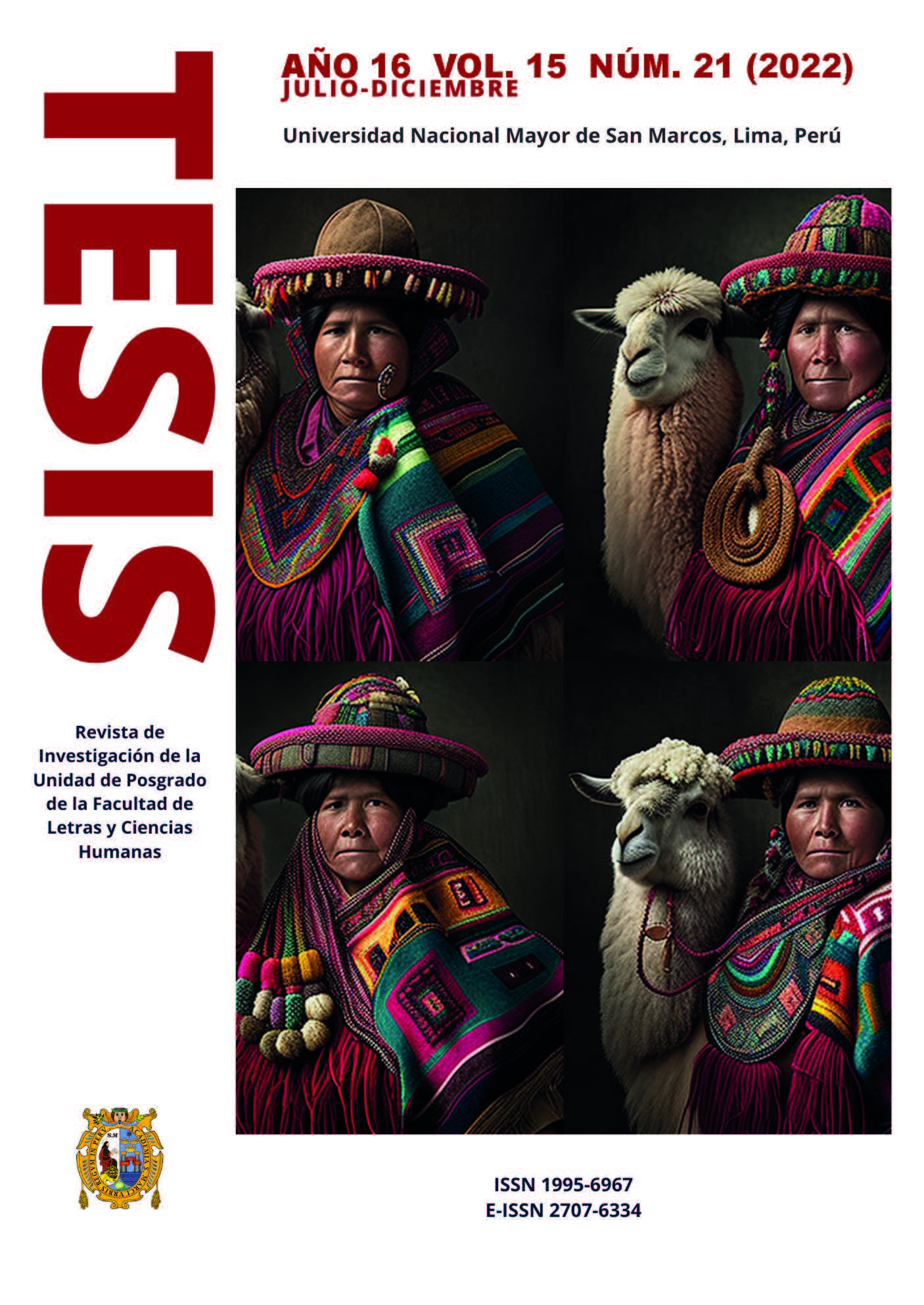Semantic-cognitive analysis of the polysemy of the appreciative-augmentative morpheme -azo in Spanish
DOI:
https://doi.org/10.15381/tesis.v15i21.25219Keywords:
polysemy, -azo, radial network, prototype, cognitive linguisticsAbstract
In this study approaches the phenomenon of polysemy in the appreciative morpheme -azo in Spanish from a semantic-cognitive perspective. The main objective is to explain the way in which the multiple meanings detectable in the uses of lexical forms derived through this suffix are organized. We reconognize that this morphological unit presents a set of motivated categories that form a polysemous network organized by means of a central semantic point or cognitive reference point whose nature is defined by the experience of physical reality, which metaphorically orients the other possible meanings of the radial network. These findings reveal that the possible senses are the product of the determination of a prototypical category linked to size, which extends the network through a mechanism of metaphorical conceptualization.
References
Behrens, H. (2009). Usage-based and emergentist aproaches to language acquisition. Linguistics, 47(2), 383-411. https://doi.org/10.1515/LING.2009.014
Berwick, R. C. y Chomsky, N. (2016). ¿Por qué solo nosotros? Evolución y lenguaje. Editorial Kairós.
Brenda, M. (2014). The cognitive perspective on the polysemy of the English spatial preposition over. Cambridge Scholars Publishing.
Chomsky, N. (2017). ¿Qué clase de criaturas somos? Ariel.
Chomsky, N. (2006). Language and mind. Cambridge University Press.
Dirven, R. (2005). Major strands in Cognitive Linguistics. En F. J. Ruiz de Mendoza Ibáñez y M. S. Peña Cervel (eds.), Cognitive linguistics: internal dynamics and interdisciplinary interaction (pp. 17-68). Mouton de Gruyter.
Evans, V. y Melanie G. (2006). Cognitive Linguistics. An introduction. Edinburgh University Press.
Glynn, D. (2014). Polysemy and synonymy. Cognitive theory and corpus method. En D. Glynn y J. A. Robninson (eds.), Corpus methods for Semantics: Quantitative studies in polysemy and synonymy (pp. 7-38). John Benjamins Publishing Company.
Hauser, M. D., Chomsky, N. y Fitch, T. (2002). The faculty of language: what is it, who has it, and how did it evolve. Science, 268, 1569-1579.
Ibarretxe-Antuñano, I. y Valenzuela, J. (2012). Lingüística Cognitiva. Anthropos Editorial.
Lewandowska-Tomaszczyk, B. (2007). Polysemy, prototypes, and radial categories. En D. Geeraerts y H. Cuyckens (eds.), The Oxford Handbook of Cognitive Linguistics, (pp. 139-169). Oxford University Press.
Moreno M., J. A. (2016). La lingüística cognitiva: una aproximación al abordaje del fenómeno cognitivo integrado. Análisis. Revista Colombiana de Humanidades, 48(88), 41-51.
Orešković, M., Essert, M. y Kurtović B., I. (2017). Encyclopedic knowledge as a semantic resource. En I. Atanassova, W. Zaghouani, B. Kragić, K. Aas, H. Stančić y S. Seljan (eds.), INFuture2017: Integrating ICT in Society (pp. 151- 160). University of Zagreb.
Piattelli-Palmarini, M., Uriagereka, J. y Salaburu, P. (2009). Of minds of language. A dialogue with Noam Chomsky in the Basque country. Oxford University Press.
Rosch, E. (1975). Cognitive Reference Points. Cognitive Psychology, 7, 532-547. https://doi.org/10.1016/0010-0285(75)90021-3
Rohrer, T. (2007). Embodiment and experientialism. En D. Geeraerts y H. Cuyckens (eds.), The Oxford Handbook of Cognitive Linguistics (pp. 25-47). Oxford University Press.
Terejko, P. (2016). Cognitive grammar as a manifestation of the pragmatic turn in Linguistics. Acta Humana, 7, 33-45. https://doi.org/10.17951/ah.2016.7.33
Valenzuela, J., Ibarretxe-Antuñano, I. y Hilferty, J. (2012). La semántica cognitiva. En I. Ibarretxe-Antuñano y J. Valenzuela (dirs.), Lingüística cognitiva (pp. 41-68). Anthropos.
Downloads
Published
Issue
Section
License
Copyright (c) 2023 Magali Cleofé Villegas Paz

This work is licensed under a Creative Commons Attribution 4.0 International License.
THE AUTHORS RETAIN THEIR RIGHTS:
(a) The authors retain their trademark and patent rights, and also on any process or procedure described in the article.
(b) The authors retain the right to share, copy, distribute, execute and publicly communicate the article published in Tesis (Lima) (in example, depositing the article in an institutional repository or publish it in a book), with recognition of its initial publication in the Tesis (Lima).
(c) The authors retain the right to make a later publication of their work, to use the article or any part of it (for example: a compilation of their works, notes for conferences, thesis, or for a book), provided that they indicate the source of publication (authors of the work, magazine, volume, number and date).














